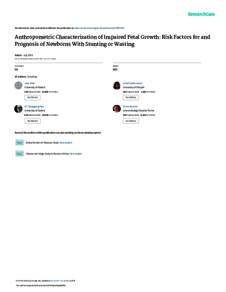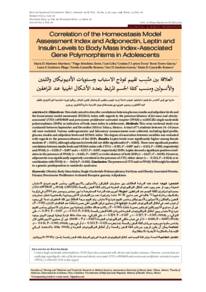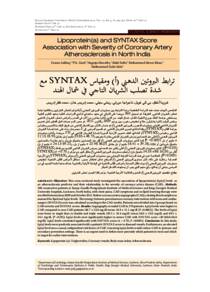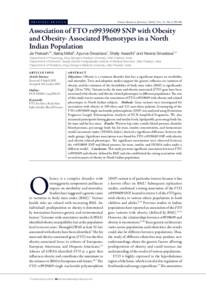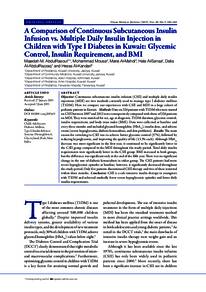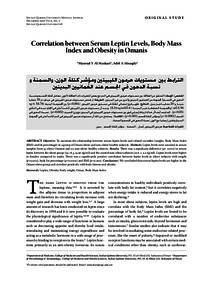Document
Anthropometric characterization of impaired fetal growth : risk factors for and prognosis of newborns with stunting or wasting.
Identifier
DOI: 10.1001/jamapediatrics.2015.1431
Contributors
Villar, José., Author
Barros, Fernando C., Author
Ismail, Leila Cheikh., Author
Chumlea, Cameron., Author
Papageorghiou, Aris T., Author
Bertino, Enrico., Author
Ohuma, Eric O., Author
Lambert, Ann., Author
Carvalho, Maria., Author
Purwar, Manorama., Author
Frederick, Ihunnaya O., Author
Pang, Ruyan., Author
Bhutta, Zulfiqar A., Author
Kennedy, Stephen H., Author
Publisher
American Medical Association.
Gregorian
2015-07
Language
English
English abstract
IMPORTANCE Stunting (short length for age) and wasting (low body mass index [BMI] for age) are widely used to assess child nutrition. In contrast, newborns tend to be assessed solely based on their weight. OBJECTIVE To use recent international standards for newborn size by gestational age to assess how stunted and wasted newborns differ in terms of risk factors and prognoses. DESIGN, SETTING, AND PARTICIPANTS A cross-sectional study with follow-up until hospital discharge was conducted at urban sites in Brazil, China, India, Italy, Kenya, Oman, England, and the United States that are participating in the INTERGROWTH-21st Project. The study was conducted from April 27, 2009, to March 2, 2014, and the final dataset for analyses was locked on March 19, 2014. EXPOSURES Sociodemographic and behavioral maternal risk factors, previous pregnancy history, and maternal and fetal conditions during pregnancy were investigated as risk factors for stunting and wasting. Anthropometry at birth was used to predict for neonatal prognosis. MAIN OUTCOMES AND MEASURES Newborn stunting andwastingwere defined as birth length and BMI for gestational age below the third centiles of the INTERGROWTH-21st standards. Prognosis was assessed through mortality before hospital discharge, admission to neonatal intensive care units, and newborn complications. RESULTS From the 60 206 singleton live births during the study period, we selected all newborns between 33 weeks' and 42 weeks 6 days' gestation at birth (51 200 [85%]) with reliable ultrasound dating. Stunting affected 3.8% and wasting 3.4%of all newborns; both conditions were present in 0.7%of the sample. Of the 26 conditions studied, five were more strongly associated with stunting than with wasting (reported as odds ratios [OR]; 95%CI): short maternal height (6.7; 5.1-9.0), younger maternal age (0.7; 0.5-0.9), smoking (2.8; 2.3-3.3), illicit drug use (2.3; 1.5-3.6), and clinically suspected intrauterine growth restriction (5.2; 4.5-6.0).Wasting was more strongly related than stunting with 4 newborn outcomes (neonatal intensive care stay, 6.7 [5.5-8.1]; respiratory distress syndrome, 4.0 [3.3-4.9]; transient tachypnea, 2.1 [1.5-2.9]; and no oral feeding for >24 hours, 5.0 [3.9-6.5]). Maternal gestational diabetes mellitus was protective against wasting (0.6; 0.5-0.8) but not against stunting (0.9; 0.7-1.1). CONCLUSIONS AND RELEVANCE Although newborn stunting and wasting share some common determinants, they are distinct phenotypes with their own risk factors and neonatal prognoses. To be consistent with the literature on infant and child nutrition, newborns should be classified using the 2 phenotypes of stunting and wasting. The distinction will help to prioritize preventive interventions and focus the management of fetal undernutrition.
Member of
ISSN
2168-6203
Resource URL
Category
Journal articles

